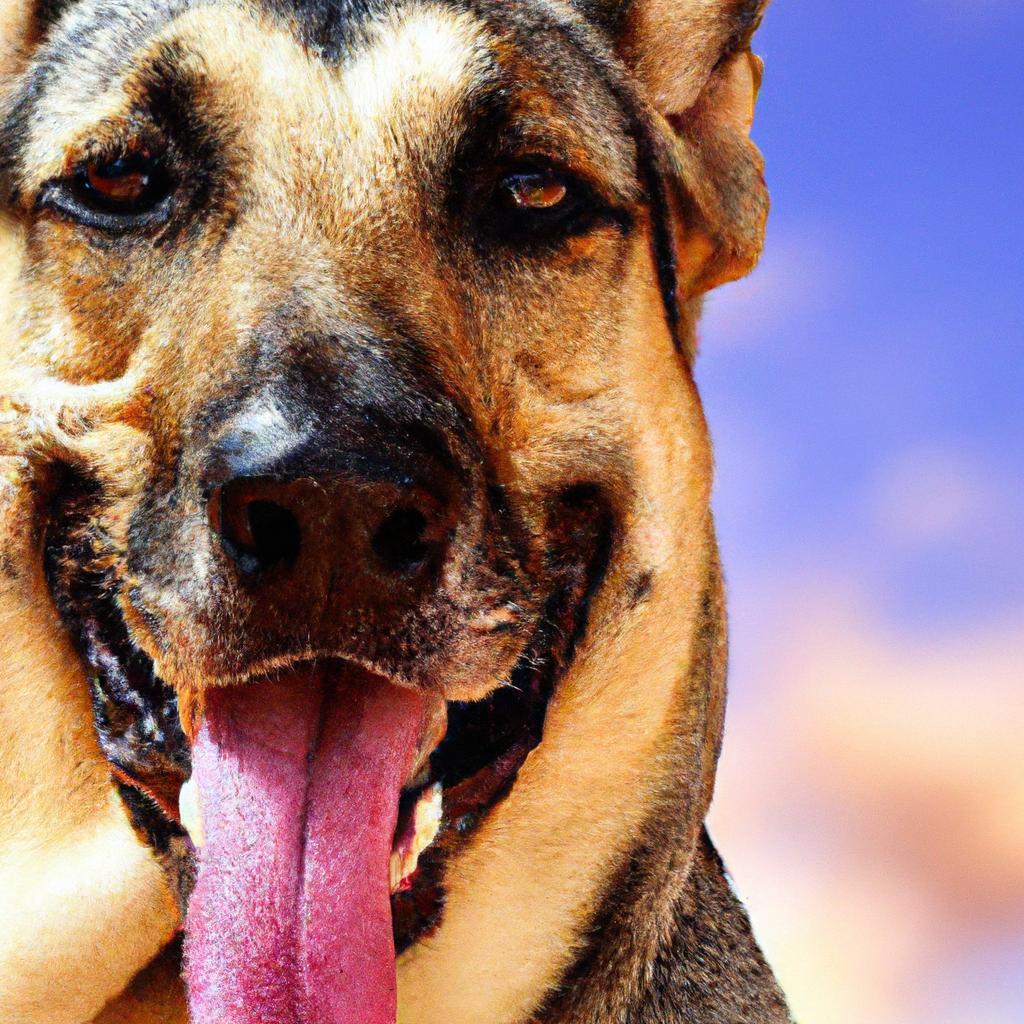Every evening, Max, a spirited golden retriever, would sit by his bowl, eyes wide and tail wagging, as if pleading for more food. His owner, Sarah, felt guilty, wondering if she was depriving him. But one day, she learned that overfeeding could lead to obesity and health issues. Instead of giving in, she adjusted his diet and incorporated more playtime. Max thrived, full of energy and joy. Remember, a hungry look doesn’t always mean your dog needs more food; it might just need more love and activity. Prioritize their health!
Contents
- Understanding Your Dogs Hunger Signals
- Evaluating the Nutritional Needs of Your Dog
- The Risks of Overfeeding and Its Consequences
- Implementing a Balanced Feeding Strategy for Optimal Health
- Q&A
Understanding Your Dogs Hunger Signals
Understanding your dog’s hunger signals is crucial for maintaining their health and well-being. Dogs communicate their needs in various ways, and recognizing these signals can help you determine whether they are genuinely hungry or simply seeking attention. Some common signs of hunger include:
- Pawing at their food bowl: This behavior often indicates that your dog is expecting a meal or a snack.
- Vocalizations: Whining or barking can be a way for your dog to express their desire for food.
- Following you around: If your dog trails you closely, especially when you’re in the kitchen, it may be a sign they are hoping for a treat.
- Increased interest in food-related activities: If your dog becomes more excited during meal prep or when they see you with their food, they might be signaling hunger.
However, it’s essential to differentiate between true hunger and other motivations. Dogs are creatures of habit, and they may develop a routine that leads them to expect food at certain times, even if they are not genuinely hungry. Additionally, some dogs may beg for food out of boredom or as a learned behavior, especially if they have been rewarded with treats in the past. Observing your dog’s behavior closely can help you understand their true needs.
Another factor to consider is your dog’s overall health and activity level. A more active dog may require additional calories, while a less active one might not need as much food. Regularly assessing your dog’s weight and body condition can provide valuable insights into whether their current diet is appropriate. Consulting with your veterinarian can also help you determine the right portion sizes and feeding schedule based on your dog’s unique needs.
Ultimately, while it can be tempting to give in to your dog’s pleading eyes, it’s essential to approach their hunger signals with a discerning eye. Instead of automatically increasing their food intake, consider incorporating more interactive playtime or mental stimulation to address their needs. By understanding the nuances of your dog’s hunger signals, you can ensure they receive the right amount of nutrition without overfeeding, promoting a healthier and happier life for your furry friend.
Evaluating the Nutritional Needs of Your Dog
Understanding your dog’s nutritional needs is crucial for their overall health and well-being. Dogs, like humans, have specific dietary requirements that vary based on factors such as age, breed, size, and activity level. It’s essential to evaluate whether your dog’s hunger signals are genuine or a result of behavioral habits. Before deciding to increase their food intake, consider the following aspects:
- Age and Life Stage: Puppies, adults, and senior dogs have different nutritional needs. Puppies require more calories for growth, while seniors may need fewer calories to maintain a healthy weight.
- Activity Level: An active dog will naturally require more calories than a sedentary one. Assess your dog’s daily activities to determine if their energy expenditure justifies an increase in food.
- Health Conditions: Certain medical conditions may affect your dog’s appetite and nutritional requirements. Consult with your veterinarian if you suspect underlying health issues.
- Quality of Food: The nutritional value of the food you provide plays a significant role. High-quality dog food often contains more concentrated nutrients, which can satisfy hunger with smaller portions.
Monitoring your dog’s body condition score (BCS) is another effective way to evaluate their nutritional needs. This scoring system helps you assess whether your dog is underweight, ideal weight, or overweight. If your dog appears to be hungry but maintains a healthy weight, it may be more beneficial to focus on the quality of their diet rather than simply increasing their food intake. Adjusting portion sizes without compromising nutritional quality can help manage their hunger effectively.
Additionally, consider incorporating healthy snacks or treats into your dog’s diet. These can provide extra nutrients and satisfy their cravings without overloading them with calories. Opt for low-calorie options like carrots or green beans, which can be a great way to keep your dog feeling full between meals. Always remember to account for these extras in their overall caloric intake to prevent unintentional weight gain.
Ultimately, the decision to increase your dog’s food should be made with careful consideration and consultation with a veterinarian. They can provide personalized recommendations based on your dog’s specific needs and help you create a balanced diet plan. By taking a thoughtful approach to your dog’s nutrition, you can ensure they remain healthy, happy, and well-fed without unnecessary weight gain.
The Risks of Overfeeding and Its Consequences
Overfeeding your dog may seem like an act of love, but it can lead to a myriad of health issues that can significantly impact your pet’s quality of life. **Obesity** is one of the most common consequences of excessive feeding, which can result in a range of serious conditions such as diabetes, heart disease, and joint problems. When a dog is consistently fed more than their body needs, they are at risk of accumulating excess fat, which can strain their organs and lead to a shorter lifespan.
Moreover, overfeeding can disrupt your dog’s natural eating habits and hunger cues. Dogs are instinctively programmed to eat when food is available, but when they are given more than necessary, they may lose the ability to recognize their true hunger signals. This can create a cycle of overeating, where your dog constantly begs for food, leading to a **vicious cycle** of weight gain and health complications.
Another significant risk associated with overfeeding is the potential for **gastrointestinal issues**. Dogs that consume too much food at once may experience bloating, gas, or even pancreatitis, a painful and serious condition that requires immediate veterinary attention. These digestive problems not only cause discomfort for your pet but can also lead to costly veterinary bills and prolonged recovery times.
overfeeding can negatively affect your dog’s behavior and overall well-being. Excess weight can lead to lethargy, decreased energy levels, and a lack of enthusiasm for playtime or walks. This can create a downward spiral where your dog becomes less active, leading to further weight gain and a decline in mental and physical health. It’s essential to maintain a balanced diet and appropriate portion sizes to ensure your dog remains healthy, happy, and active.
Implementing a Balanced Feeding Strategy for Optimal Health
When considering your dog’s hunger cues, it’s essential to evaluate their overall dietary needs rather than simply responding to their apparent desire for more food. Dogs, like humans, can exhibit behaviors that may suggest they are hungry, but these cues can sometimes be misleading. Instead of immediately increasing their food intake, take a moment to assess their current feeding regimen and overall health. A balanced diet is crucial for maintaining optimal health, and understanding your dog’s specific nutritional requirements is the first step in achieving this.
Start by examining the quality of the food you are providing. Not all dog foods are created equal; some may lack essential nutrients that contribute to a feeling of fullness. Look for high-quality ingredients that include:
- Protein sources such as chicken, beef, or fish
- Whole grains like brown rice or oats
- Fruits and vegetables that provide vitamins and minerals
Ensuring that your dog’s food is rich in these components can help satisfy their hunger more effectively, reducing the temptation to overfeed.
Another factor to consider is the feeding schedule. Dogs thrive on routine, and inconsistent feeding times can lead to confusion about when they should expect their meals. Establishing a regular feeding schedule can help regulate their appetite and prevent them from begging for food outside of designated meal times. Additionally, consider portion control; feeding the appropriate amount based on your dog’s size, age, and activity level is vital. Consult your veterinarian for personalized recommendations tailored to your dog’s specific needs.
Lastly, it’s important to monitor your dog’s weight and overall health regularly. If your dog seems persistently hungry despite a balanced diet and proper portion sizes, it may be worth investigating potential underlying health issues. Conditions such as diabetes or thyroid problems can affect appetite and metabolism. Regular veterinary check-ups can help identify any health concerns early on, ensuring your furry friend remains healthy and happy without unnecessary overfeeding.
Q&A
-
Is my dog truly hungry or just begging for food?
Dogs often beg for food out of habit or boredom rather than genuine hunger. Observe your dog’s behavior; if they are frequently seeking food outside of meal times, it may be more about attention-seeking than actual hunger.
-
How can I tell if my dog is getting enough food?
Monitor your dog’s weight and body condition. A healthy dog should have a visible waist and ribs that can be felt but not seen. Consult your veterinarian for personalized feeding guidelines based on your dog’s age, size, and activity level.
-
What if my dog seems hungry after eating the recommended amount?
Consider the quality of the food you are providing. High-quality dog food is more nutrient-dense and can help satisfy your dog’s hunger. If your dog still seems unsatisfied, consult your vet to rule out any underlying health issues or to discuss adjusting their diet.
-
Can I give my dog treats if they seem hungry?
Yes, but moderation is key. Treats should not exceed 10% of your dog’s daily caloric intake. Opt for healthy, low-calorie treats and ensure they fit within your dog’s overall diet plan to maintain a balanced nutrition.
while it’s natural to want to satisfy your dog’s hunger, it’s crucial to assess their overall health and nutritional needs first. Consult your veterinarian to ensure your furry friend receives the right balance of food for a happy, healthy life.




